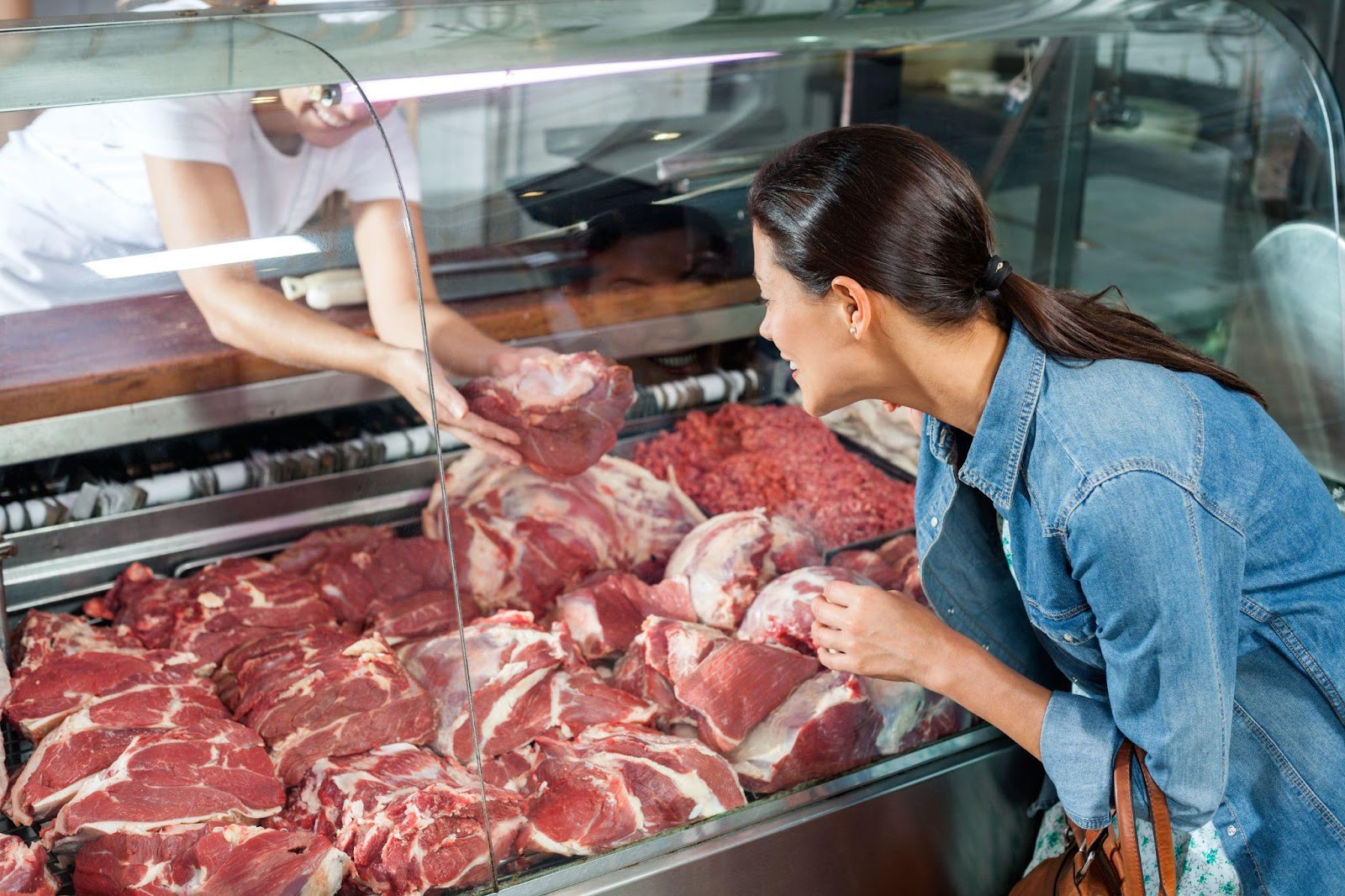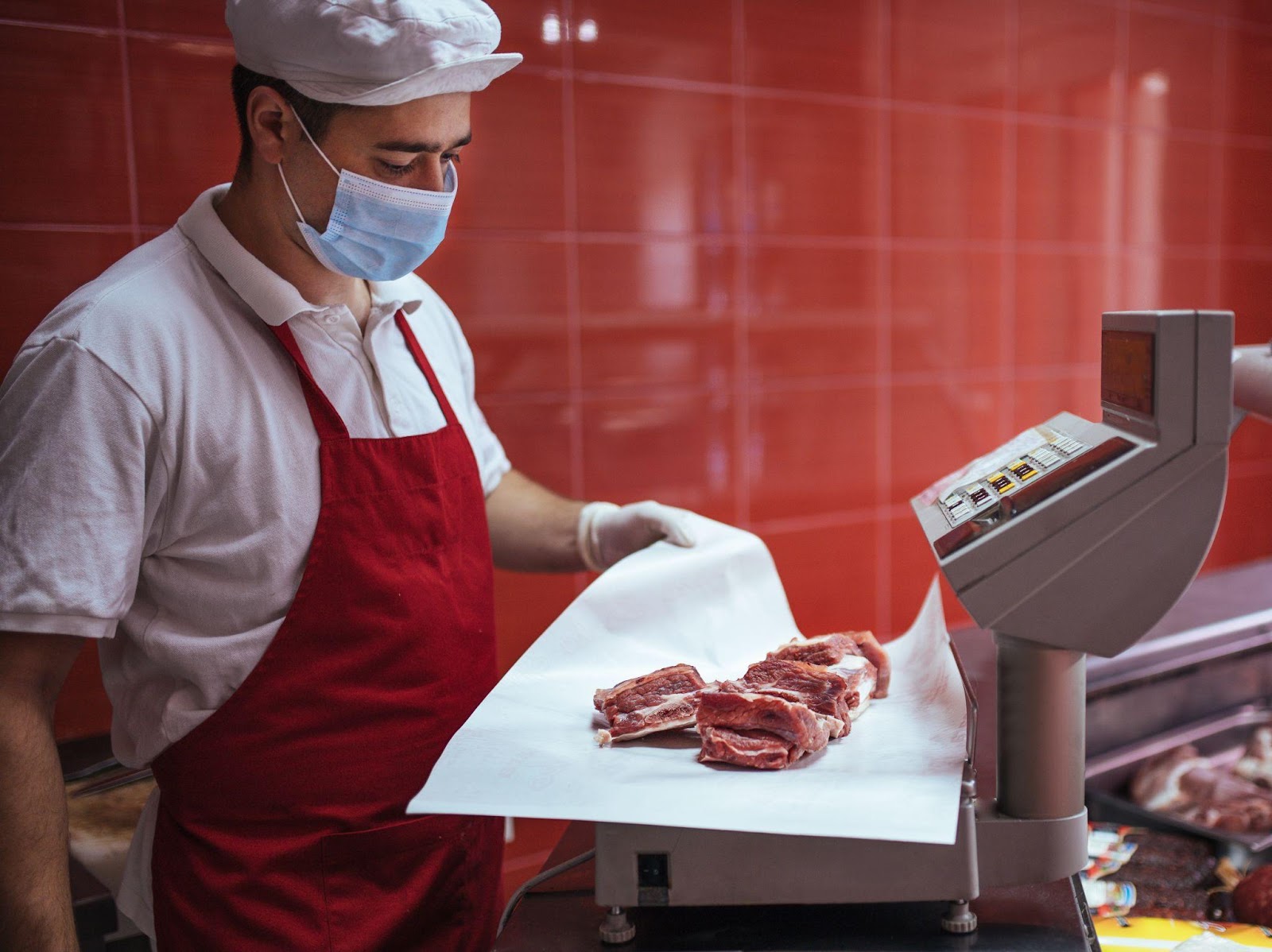Table Of Contents
Good meat cooked right is one of life’s greatest pleasures. There’s nothing in the world like a flawless ribeye cooked over charcoal, or like a rack of ribs slow cooked for hours on a pellet grill. However, to get the results you really want from your BBQ, you’ve gotta start with quality cuts. So, how can you tell the good from the not-so-good when shopping for meat? There are some key signs to look for that can reliably point you to the best meat. We’ll discuss seven of the most important ways to ensure the meat you buy is up to your standards of taste and quality.
-
Check the sell-by date.
Before you do anything else, take a look at the meat’s sell-by date. Obviously, don’t buy anything that’s past date — but it’s worth being a little pickier than that. If you’re looking for the very freshest cuts, look at the sell-by date on the different packages of meat available. A date that’s coming up soon indicates the meat has been on the shelf for a little longer, while one that’s farther away means it was packed more recently. Not only will the more recently packed meat be fresher, but it will keep for longer in your fridge.
This doesn’t mean you should never buy meat that’s approaching the sell-by. As long as the meat looks good in other respects, so-called “manager’s special” cuts can still be a fine way to save money if you cook them quickly. For the best of the best, however, go for the freshest you can find.
-
Look for widespread, evenly distributed marbling in beef.
In premium cuts of beef, marbling is one of the most desirable features that meat lovers look for. The term refers to the tiny patches of white fat between the muscle fibers of high quality beef. If you’ve ever seen a piece of ultra-premium Wagyu beef, the white parts interspersed throughout the meat are the marbling, and they’re the reason it commands such an impressive price. Marbling gives the meat juiciness and flavor as it melts, improving the meat’s texture and mouthfeel. An easy way to find well-marbled beef in most grocery stores is to look for USDA Prime or USDA Choice grades, since marbling is the primary factor that these grades evaluate. Of course, beef with little marbling can still be useful for ground beef and other types of cuts, but look for marbling in cuts like steak or brisket.
-
Know the color of good meat.
Color is one of the most useful ways to spot good-quality meat. Here’s a basic guide to what you should look for:
- Raw poultry should have a pale pink color.
- Beef should be a vivid ruby red or dark purple.
- Fish can be a variety of colors, depending on species, from deep red for tuna to pinkish-orange for salmon.
When it comes to poultry and fish, discolored parts are always a bad sign. With beef, slight discoloration doesn’t always mean it’s gone bad since a steak that’s been kept in the refrigerator for a few days can start to go slightly brown and still be safe to eat. Ground beef, in particular, sometimes gets a brown part in the center due to lack of oxygen, and it doesn’t affect its quality. However, beef that’s turning brown does often mean that it’s not as fresh as it could be.
-
Give it a smell test.
Fresh, high quality meat shouldn’t have any smell you can easily perceive. Even unpackaged fish shouldn’t smell recognizably “fishy” when it’s fresh — a slight salt water smell is the only thing that should hit your nostrils. While good meat can have a very mild scent when it’s unwrapped, anything with a strong enough smell to be perceptible through the packaging will probably leave you in for a nasty surprise when you get it home. Give it a sniff while you’re at the market and choose another piece if the smell gives you any doubts.
-
Poke it and check that the texture is firm.
A firm, consistent texture is another characteristic of good meat. High-quality beef and pork should be firm to the touch, with a little bit of give. Poultry and most fish will be softer, but still shouldn’t feel squishy or slimy. If you get it home and the meat’s texture feels off, don’t take chances — toss it and avoid potential food poisoning.
-
Know the cut of meat that’s right for your culinary needs.
With so many cuts of meat available today, it’s important to know the differences so you can choose the right one. Most people can tell the difference between pork chops and ribs or between a ribeye and a brisket, but there are more subtle differences that can affect the quality of what you get.
For example, brisket lovers seeking to create the most tender brisket ever on their WiFi pellet grills should learn the difference between the fattier point and the leaner flat. BBQ pitmasters who want to master the art of ribs, meanwhile, need to know the difference between baby back vs. St. Louis cut and the special cooking needs of each one.
-
Buy from a butcher if you can.
Finally, there are a lot of advantages to finding a butcher in your area that you can build a relationship with, like the online butcher Melbourne. First, meat from a butcher is almost always more fresh that what you’ll find in a grocery store, and it’s often more skillfully cut as well. Once you find a butcher you trust, you can have grass fed beef delivered to your door.
Plus, if you get to know your butcher, they can help you learn about meat and show you how to spot the best cuts. Ask them about the preferred cuts for any charcoal, gas or pellet grill recipes you’re planning to cook soon. You can use that knowledge anytime you’re shopping for meat somewhere else to make informed decisions about how to get the cuts your friends and family will enjoy the most!









